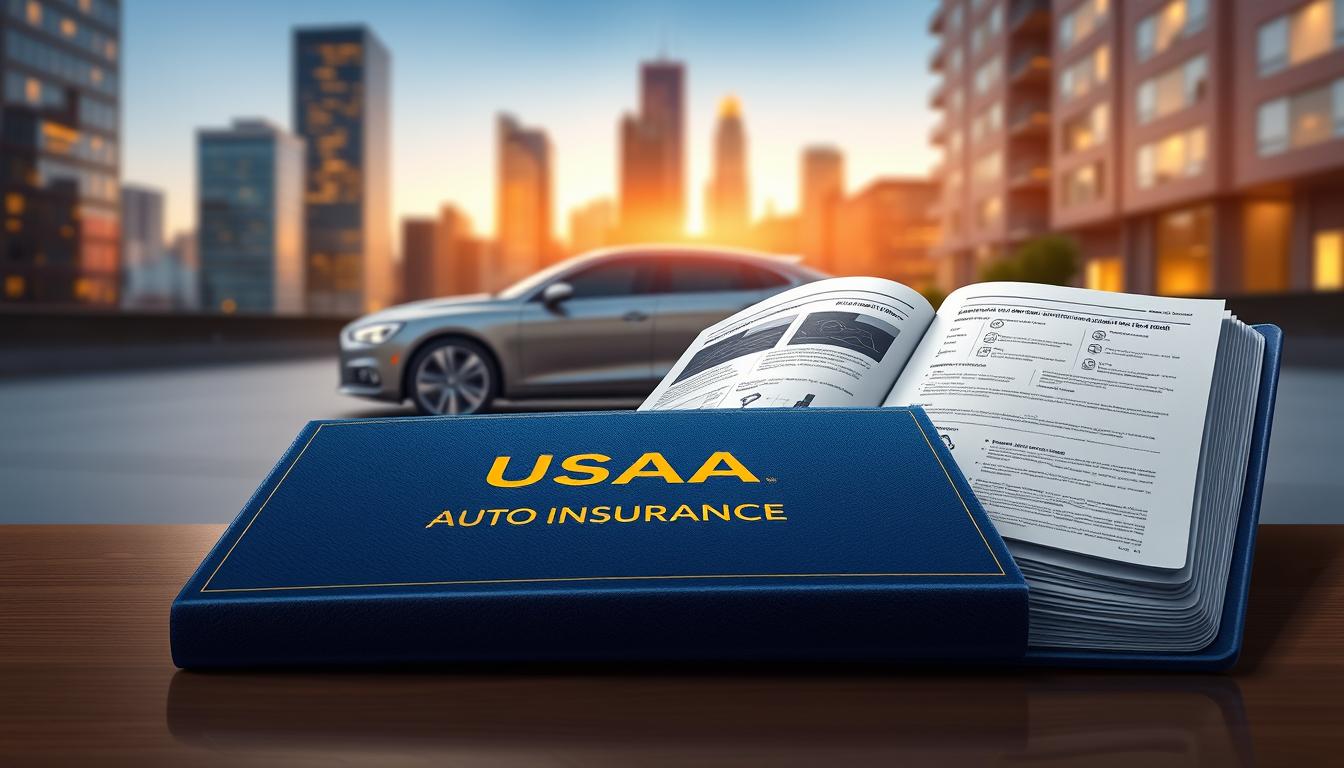How to get the top 10 auto insurance quotes in 2025: A step-by-step guide
Finding the right auto insurance doesn’t have to be difficult. You may obtain dependable coverage quotes at a competitive price by simply comparing the top 10 auto insurance quotes with the right approach. This article explains all you need to know, from knowing what influences your rates to using proven money-saving strategies. Whether you’re purchasing your first policy or switching your existing provider, this professional advice will help you navigate the 2025 insurance market with confidence and clarity.
Key Factors to Consider When Comparing Auto Insurance Quotes

It’s important to understand what makes one policy better than another before you start gathering quotes. Not all insurance quotes are made equal; some could appear less expensive but provide less protection when you need them most. To make an informed choice, pay attention to the below six key factors that determine the actual worth of your coverage.
Coverage Types and Limits
The foundation of every auto insurance policy is coverage types. Compare comprehensive, collision, uninsured/underinsured motorist, personal injury protection, and liability limits for both property damage and bodily injury. Higher limit coverage provides strong protection but higher premiums.
Deductible Amounts
The amount you must pay out-of-pocket before your insurance coverage starts after filing a claim is the deductible amount. A higher deductible can lower your expenses but raises the amount you will pay in the event of an accident. While a greater deductible can reduce your expenses, it also raises the amount you have to pay in the event of an accident, a lower deductible typically results in higher monthly premiums. When comparing quotes, make sure you’re looking at the same deductible amounts across all providers for a fair comparison.
Additional Coverage Options
Consider valuable add-ons like roadside assistance, rental car reimbursement, gap insurance, and new car replacement coverage. Focus on what you need most because these extras provide complete protection but affect your premiums.
Discount Eligibility
There are several ways to reduce your premiums through discounts offered by insurance providers. Popular options include diver discount, multi-policy bundling, good student discount, vehicle safety feature discount, and payment method savings. Each company has its own discounts; before making a choice, make sure to ask about offered discounts.
Company Reputation and Service
The best option isn’t usually the one with the lowest quotes. A company’s reputation for managing claims, financial security, and customer service makes a big difference when you need them most. Checking resources like the NAIC Complaint Index, J.D. Power rating, and AM Best financial strength scores can provide useful information.
Policy Term Length
Usually, insurance policies have terms of six to twelve months. Make sure you compare quotes within the same period of time. Annual policies may offer better rates but need a longer commitment.
Top 10 Auto Insurance Companies for Competitive Quotes
Some insurers constantly stand out for providing affordable estimates, excellentcoverage options, and dependable service. To help you choose the best option for your needs, here’s a breakdown of the top 10 insurance providers below.

1. Geico
GEICO is known for providing some of the industry’s lowest rates for auto insurance. The company’s user-friendly tools, advanced mobile app, and extensive discounts make it stand out. You can access your digital insurance ID card, register a claim, and manage your policy with a few clicks.
2. Progressive
Progressive stands out for its dependability and innovative pricing strategies. The Snapshot program offers personalized savings for safe driving, and with its Name Your Price tool, you can explore coverage options that fit your budget. Progressive is a good choice for drivers who are rebuilding their insurance profile because it is known for being more tolerant of drivers with accident records and violations.
3. State Farm
State Farm, the largest auto insurer in the country, offers low prices together with dependable local service. While the Drive Safe and Save program rewards safe driving practices with possible discounts, its wide network of local agents offers personalized service. State Farm is a popular choice for responsible and safe drivers because it frequently receives high ratings for customer satisfaction. Standout features: Local agent network, Drive Safe & Save program, Steer Clear program for young drivers, and ride share coverage for Uber/Lyft drivers.
4. USAA
USAA, which is only accessible for military members, veterans, and their families, is known for offering the lowest prices and the best customer satisfaction. The company offers military-focused benefits like coverage during deployment and discounts for vehicles stored on military bases. Standout features: Military-specific discounts and benefits, accident forgiveness, car replacement assistance, and consistently high customer satisfaction ratings.
5. Allstate
Allstate offers advanced coverage options that serve a variety of drivers in addition to a vast network of local agents. While Milewise provides a flexible pay-per-mile plan that is perfect for low-mileage drivers, and Drivewise promotes safe driving. Allstate provides customers with confidence and control over their coverage through strong customer service and ensures claim satisfaction. Standout features: Drivewise and Milewise programs, claim satisfaction guarantees, new car replacement, and accident forgiveness.
6. Liberty Mutual
Liberty Mutual is known for its wide range of discounts tailored to various driver requirements and its adaptable coverage options. Their RightTrack program offers individualized savings for safe driving practices. Liberty Mutual is also known for new car replacement and better car replacement. Standout features: RightTrack program, teacher-specific benefits, new car replacement, and lifetime repair guarantee when using approved shops.
7. Farmers
Farmers Insurance offers three customized policy options; Standard, Enhanced, and Premier, to match the needs and budget of drivers. The company offers specialized equipment coverage and OEM part replacement. Farmers offers specialized coverage for vintage car and rideshare drivers. Standout features: Declining deductibles, incident forgiveness, and specialized coverage options for unique situations.
8. Nationwide
Nationwide offers a range of coverage options and digital tools for policy management. SmartMiles provides a flexible pay-per-mile plan, and SmartRide rewards safe driver practice. Nationwide offers On Your Side Review, which ensures that you have proper coverage. Standout features: SmartRide and SmartMile programs, vanishing deductible, accident forgiveness, and gap insurance.
9. Travelers
Travelers offers reasonable prices and dependable coverage options with clean driving records. Their IntelliDrive program monitors driving patterns and provides discounts for safe driving. Travelers are also known for their affinity discounts through employers, groups, and alumni associations. Standout features: IntelliDrive program, new car replacement, accident forgiveness, and gap insurance.
10. American Family
American Family offers personalized service via a network of local agents where they operate. Their KnowYourDrive program offers discounts for safe driving practices. American Family is a reliable option because of its responsive customer service and claim support. Standout features: KnowYourDrive program, diminishing deductible, accident forgiveness, and gap insurance.
Regional Insurers Worth Considering
Smaller regional insurers can frequently offer more competitive prices and individualized customer service within their service area, even while national companies control the majority of the market. Companies like Erie Insurance (Northeast/Mideast) and Amica Mutual (nationwide but strongest in the Northeast) continuously receive high customer satisfaction ratings. Regional insurers are a good option for drivers with certain profiles or coverage needs because they also provide underwriting flexibility.
Comparison Shopping Tools
Use online comparison sites to compare quotes from several insurers that can provide several companies at once. Sites like Compare.com, TheZebra.com, and Insurify.com offer individualized quotes from multiple leading providers. You can easily determine which company provides the best price for your specific profile with these sites. You must complete the entire application process on their official website in order to obtain a quote.
Step-by-Step Process to Get the Top 10 Auto Insurance Quotes
Follow the systematic approach to gather information and compare auto insurance quotes from the top 10 providers.

- Gather Your Personal InformationBefore requesting quotes, collect all necessary information: driver's license numbers for all drivers in your household, vehicle identification numbers (VINs), current insurance declarations page (if applicable), driving history details, and personal information including birth dates and addresses.
- Determine Your Coverage NeedsDecide what coverage types and limits you need based on your state requirements, vehicle value, assets to protect, and risk tolerance. At minimum, know what liability limits you want, whether you need comprehensive and collision coverage, and what deductible amounts you prefer
- Research Insurance CompaniesCreate a list of 8-12 insurance companies to contact, including major national insurers, regional providers, and any companies where you might qualify for affinity discounts (through employers, alumni associations, etc.). Check customer satisfaction ratings through J.D. Power and complaint indexes through the NAIC.
- Use Multiple Quote Comparison ToolsStart with online comparison sites like Compare.com, TheZebra.com, or Insurify.com to get initial estimates from multiple companies simultaneously. These tools can provide a baseline for rates and help you identify which companies might offer the most competitive quotes for your situation.
- Contact Insurance Companies DirectlyFor the most accurate quotes, contact your shortlisted companies directly through their websites, mobile apps, or by phone. Some insurers like State Farm and Allstate may require or recommend speaking with a local agent for the most accurate quote and available discounts.
- Inquire About All Available DiscountsWhen requesting quotes, ask specifically about all discount programs you might qualify for. Common discounts include multi-policy, multi-vehicle, good driver, good student, vehicle safety features, payment method, and professional/organizational affiliations. Different insurers offer different discount programs.
- Create a Standardized Comparison SheetAs you receive quotes, record them in a standardized format that allows for direct comparison. Include monthly and annual premiums, coverage limits, deductibles, available discounts, and any unique features or benefits. This makes it easier to identify the best overall value.
- Verify Quote DetailsBefore making a final decision, verify that all quotes include the same coverage types, limits, and deductibles. If a quote seems unusually low, double-check that it includes all the coverage you requested and doesn't have any misunderstandings about your driving history or vehicle usage.
- Evaluate Beyond PriceConsider factors beyond the premium amount, including the company's financial stability, claims satisfaction ratings, customer service reputation, digital tools, and convenience features like mobile apps or local agent availability.
- Make Your Selection and Complete the ApplicationOnce you've identified the best option, complete the formal application process. Be prepared to provide documentation like driver's licenses, vehicle registration, and possibly proof of prior insurance. Set the effective date to ensure continuous coverage if switching from another insurer.
Ready to Start Comparing Auto Insurance Quotes?
Use our partner comparison tool to get quotes from multiple top-rated insurers in just minutes. Enter your information once and receive personalized quotes to compare side-by-side.
5 Proven Strategies to Lower Your Auto Insurance Premiums
Beyond simply comparing quotes, implement these effective strategies to potentially reduce your premiums by hundreds of dollars annually:

1. Bundle Multiple Policies
Combining your auto insurance with homeowners, renters, or other policies from the same company typically results in multi-policy discounts ranging from 5% to 25%. This strategy not only saves money but also simplifies your insurance management with a single provider. Potential savings: 5-25% on both policies Best for: Homeowners, renters, or those with multiple vehicles or other insurance needs
2. Maintain a Clean Driving Record
Safe driving is perhaps the most effective way to keep premiums low. Most insurers offer good driver discounts for those who remain accident and violation-free for 3-5 years. Some companies also offer accident forgiveness programs that prevent rate increases after your first at-fault accident. Potential savings: 10-40% depending on driving history Best for: All drivers, especially those with clean records
3. Participate in Telematics Programs
Usage-based insurance programs like Progressive's Snapshot, State Farm's Drive Safe & Save, or Allstate's Drivewise monitor your driving habits through a mobile app or device. Safe driving behaviors like gentle braking, moderate acceleration, and driving during safer hours can earn significant discounts. Potential savings: 5-40% based on driving habits Best for: Safe drivers who don't mind having their driving monitored
4. Optimize Your Coverage and Deductibles
Review your coverage to ensure it's appropriate for your current situation. For older vehicles worth less than $4,000, consider dropping comprehensive and collision coverage. Increasing your deductible from $500 to $1,000 can reduce your premium by 10-20%, though be sure you can afford the higher out-of-pocket cost if you need to file a claim. Potential savings: 10-30% depending on changes Best for: Drivers with emergency funds and older vehicles
5. Improve Your Credit Score
In most states, insurers use credit-based insurance scores to help determine premiums. Maintaining good credit by paying bills on time, reducing debt, and monitoring your credit report for errors can significantly lower your insurance costs over time. This factor can impact rates almost as much as your driving record in many states. Potential savings: 15-50% with excellent vs. poor credit Best for: Anyone with less-than-excellent credit Note: California, Hawaii, Massachusetts, and Michigan restrict or prohibit the use of credit in auto insurance rating.
Additional Discount Opportunities
Pro Tip: Review Your Policy Annually: Insurance needs and pricing algorithms change regularly. Set a calendar reminder to review your coverage and shop for new quotes at least once a year, ideally 2-3 weeks before your policy renewal date. This practice alone can save you hundreds of dollars over time as different insurers may offer more competitive rates as your circumstances change.
Common Mistakes to Avoid When Comparing Auto Insurance Quotes
Don't let these common pitfalls undermine your efforts to find the best auto insurance value:
What To Do Compare identical coverage limits and deductibles across all quotes Research each company's financial stability and claims satisfaction Consider both short-term savings and long-term value Read the policy details before purchasing Ask about all available discounts Understand how claims might affect future premiums
What To Avoid Focusing solely on price without considering coverage quality Providing inconsistent information across different quotes Overlooking important coverage types to save money Failing to disclose relevant driving history information Choosing unnecessarily low deductibles Ignoring company reputation and financial stability
1. Focusing Only on Premium Cost
The cheapest policy isn’t always the best option, despite the temptation to go straight for the lowest premiums. Some insurers offer insufficient coverage, great deductibles, and limited assistance for claim support. A higher premium offers better protection and service when you need it the most. Better approach: Examine the overall value proposition, including coverage quality, claim processing, customer service support, and financial stability.
2. Overlooking Policy Details and Exclusions
The fine print is important. Policies frequently include how they establish special restrictions, exclusions, and limitations. Before making a decision, make sure you thoroughly review the policy details to know exactly what is covered. Better approach: Request and review the actual policy details before making a final decision. Pay attention to exclusions, limits, and how the policy handles your situation.
3. Providing Inconsistent Information
When obtaining multiple quotes, make sure to provide the same information to all insurers. When purchasing a policy, the company validates your information, inconsistent information might result in inaccurate quotes. Better approach: Prepare your information in advance and provide identical details to each insurer. Inaccurate information leads to higher rates or policy cancellation.
4. Ignoring State-Specific Requirements
Each state has its own insurance policy regulations. There might be a lot of variation in coverage levels, available discounts, and even credit score. What works in one state might be unavailable in another state. Better approach: Research your state’s specific insurance policy requirements and regulations. Many insurers official websites offer customer guides explaining state requirements and considerations.
5. Not Considering Future Needs
Your insurance needs to change over time because of life-changing situations such as buying a new vehicle, relocating, or adding a teenage driver, may have an impact on your premiums and coverage types. Choose an insurance provider that provides flexibility and makes it simple to modify the policy based on your situations. Better approach: Consider policies based on future changes, and check how each insurer handles policy management, new vehicle additions, and increasing premiums after submitting a claim, or life changes.
6. Failing to Ask About Discounts
Don’t expect your insurer to automatically offer you all available discounts you qualify for. Take a few minutes to inquire about all available discounts so you can easily save hundreds of dollars. Better approach: Ask each insurer directly about available discounts that are offered and what steps and documentation are needed to qualify. Some discounts need proactive steps, such as completing a defensive driving course and signing up for paperless billing.
Warning: Beware of Coverage Gaps: When switching you insurer, make sure your new policy begins before your old one expires. A single day without insurance can result in serious issues, such as increased future premiums, fines for driving uninsured, and financial responsibility in the event of an accident. To guarantee ongoing protection, always verify effective dates.
Frequently Asked Questions About Auto Insurance Quotes

How often should I compare auto insurance quotes?
Insurance professionals recommend comparing rates annually, preferably 2 to 3 weeks before the date of your current policy renewal. You should shop around after major life events such as moving, getting married, adding a teen driver, buying a new vehicle, or going through significant credit score changes. Your rates can be significantly impacted by these events, and many insurance providers may react to these changes differently.
Do multiple insurance quotes affect my credit score?
No, getting quotes for auto insurance has no effect on your credit score. While many insurers use credit-based insurance scores to help determine rates (except in California, Hawaii, Massachusetts, and Michigan), these are soft inquiries that don’t impact your credit score. You can collect as many quotes as you like without worrying about negative credit scores.
Why do quotes from comparison sites sometimes differ from direct quotes?
Estimates from comparison webistes are usually based on incomplete data and might not take into consideration all discounts, certain underwriting considerations, or the most recent rating algorithms. Always ask directly from the insurer for the most accurate quotes. Quotes from comparison websites are useful for initial screening, but final rates may differ after all data has been processed and verified.
Is it better to work with an agent or get quotes online?
Both approach have their own benefits. Online quotes are easy and quick for comparisons, but independent or captive agents offer personalized service in determining coverage options and available discounts that aren’t accessible online. An agent who provides quotes from different insurers can provide you the best service in complex situations or if you prefer personalized service.
How much can quotes vary between different insurance companies?
For the same coverage, quotes might vary significantly and frequently by hundreds or thousands of dollars annually. This occurs due to rating variables and algorithms that each insurer uses to evaluate risks. Some companies may prefer your driving history, but some prefer credit scores, vehicle type, or other factors. This variety is the exact reason it’s important to compare several quotes.
What information do I need to provide to get accurate auto insurance quotes?
To receive accurate quotes, be prepared to provide: Personal information for all drivers (name, birth date, address, occupation) Driver`s license numbers and driving history (accidents, violations) Vehicle information (year, make, model, VIN, mileage, usage) Current insurance information (company, coverage limits, time with current insurer) Desired coverage types and limits Information about any special circumstances (business use, teen drivers, etc.) The more complete and accurate your information, the more reliable your quotes will be.
Can I get quotes if I don't currently have insurance?
Yes, you can get a quote if you don’t have any current insurance; however, the prices might be higher. Most insurers charge more for drivers who have a coverage lapse, and according to statistics, they show higher risks. Explain your situation to the insurer if you’re a new driver or returning to driving after a long period without a vehicle, and some insurers have specific programs or allowances for these situations.
Finding Your Ideal Auto Insurance: Next Steps
To find the right auto insurance quote, it takes more than just comparing rates; it takes a careful strategic approach. By carefully reviewing coverage options, using available discounts, and avoiding common mistakes, you can select a policy that provides strong protection at an affordable cost. Remember that the best policy isn’t always the less expensive one; rather, it’s the one that best suits your needs, offers reliable customer service, and gives you peace of mind. Use the techniques described in this guide to begin comparing quotes right now. You can successfully navigate the insurance market and obtain coverage that protects your finances and future with thorough research and making well-informed decisions.
Ready to Find Your Best Auto Insurance Deal?
Find out how much you may save on your auto insurance right now; possibly hundreds of dollars; by comparing qotes from different insurers.




